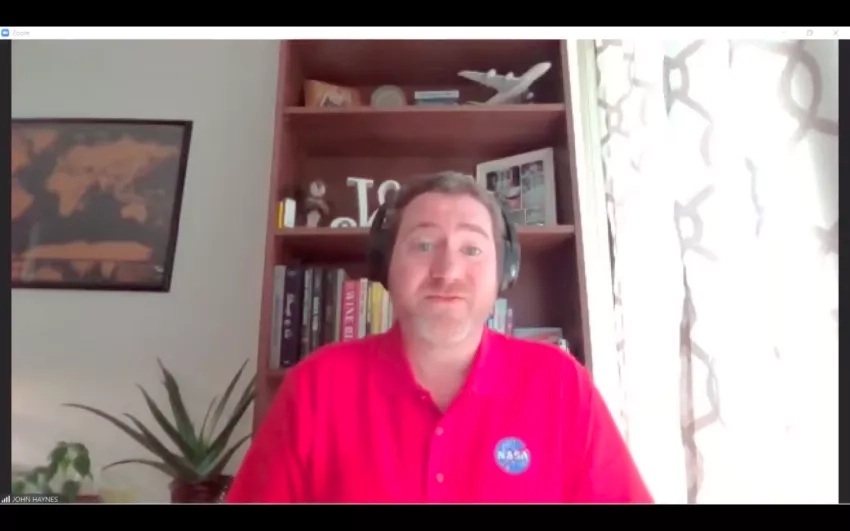Published
Fifty years ago, people around the world celebrated the first Earth Day on April 22, 1970. This year was the 50th anniversary of Earth Day and NASA commemorated the event with a full-court press of feature stories, videos, Earth Day at Home events, the NASA Science Live television program and various media interviews.
All of the Earth Applied Sciences Programs help people across the world use NASA data to solve big problems right here on Earth and as such, many of our programs and projects were featured, they include:
- Water Resources' support of a number of projects in tracking and predicting the world's freshwater resources, as well as efforts to protect water quality were included in the NASA.gov feature, "When It Comes to Water, You Have to Think Global."
- John Haynes, the lead of the Health and Air Quality program area, took part in a live streamed event hosted by Trinity College Dublin in partnership with the Smithsonian's Earth Optimism Summit. Titled "An Air of Positivity" it explored positive solutions to achieving healthier and cleaner air quality.
John Haynes, lead of the Health and Quality program area, taking part in the "Air of Positivity" forum. - Dan Irwin was the focus of a profile of him and the SERVIR program by the Huntsville, Alabama television station WHNT, "SERVIR Program Uses Satellite Data to Address Critical Challenges on Earth."
Dan Irwin, of SERVIR, was featured on the local news in Huntsville, Ala., WHNT-TV. - The Prediction of the Worldwide Energy Resources (POWER) project, which NASA data into the hands of sustainability specialists for decision making, was covered in the NASA.gov feature, "NASA Earth Data Powers Energy-Saving Decisions."
- The Disasters program area's work on tracking and mitigating the flooding effects that sea level rise is having was included in the NASA.gov story, "Whatever Sea Level Rise Brings, NASA Will Be There." The article included work on risk and resilience before events occur, for example work done in the Hampton Roads, Virginia area, as well as work done in assisting response agencies with data from projects like NASA's Advanced Rapid Imaging and Analysis (ARIA) team.
- The Health and Air Quality program area's work on air quality was the main focus of the NASA.gov story "How NASA is Helping the World Breathe More Easily."
- The Ecological Forecasting program area had a number of projects highlighted in the NASA.gov feature, "NASA Is Where the Wild Things Are." Included in the article was a project with the country of Oman on tracking water quality titled a Decision and Information System for the Coastal Waters of Oman (DISCO), the Bird Returns program in which rice farmers in California are compensated for flooding their fields as the right times for migratory birds, and a project that used satellite and aircraft images to find previously unknown penguin colonies by finding their guano, or droppings, in the Antarctic.
- In addition, various Earth Applied Sciences projects were featured in the "Earth Day Countdown" blog, where for the 50 days leading up to April 22 a daily NASA project was featured on the website and on the NASA Earth Twitter and Facebook accounts.
2118





